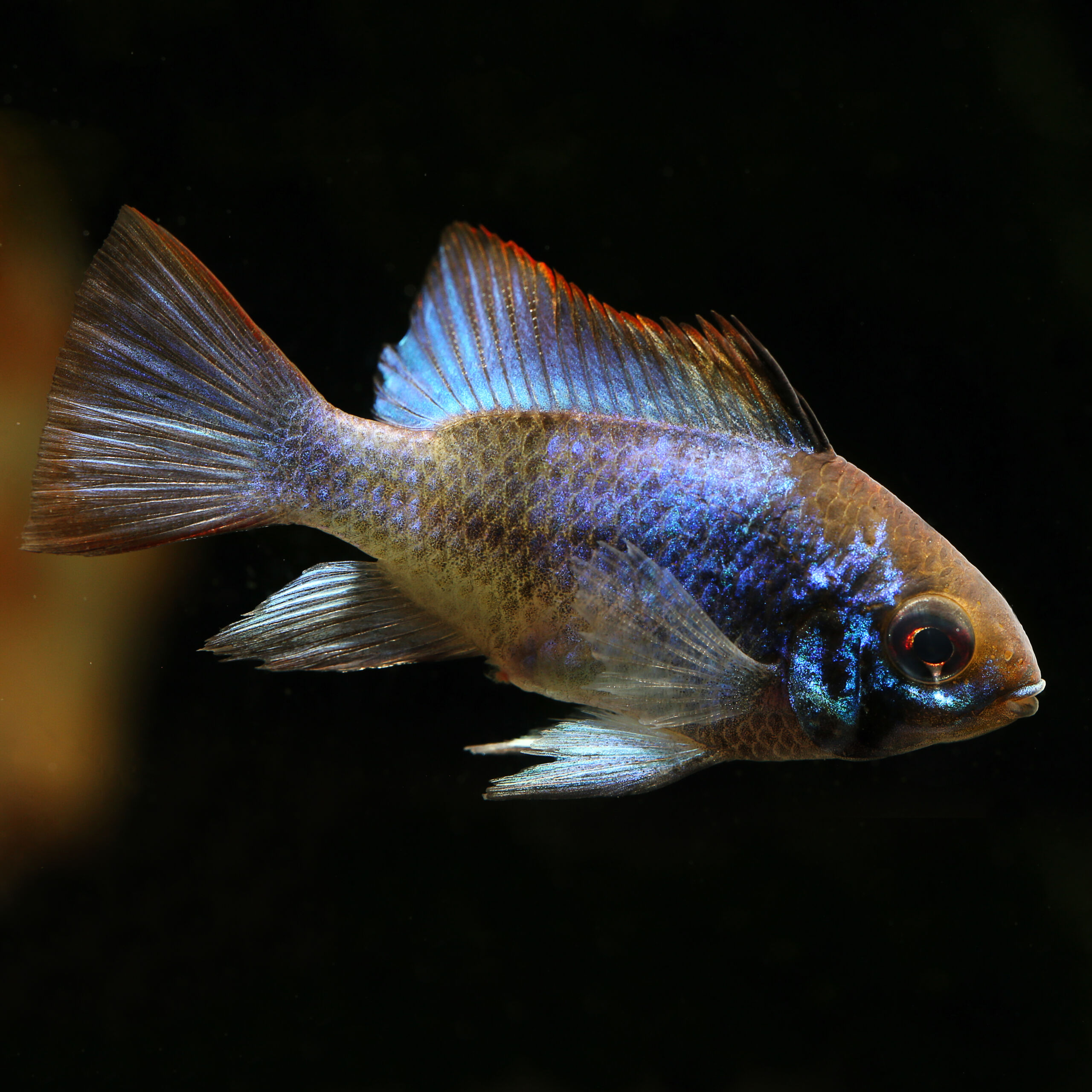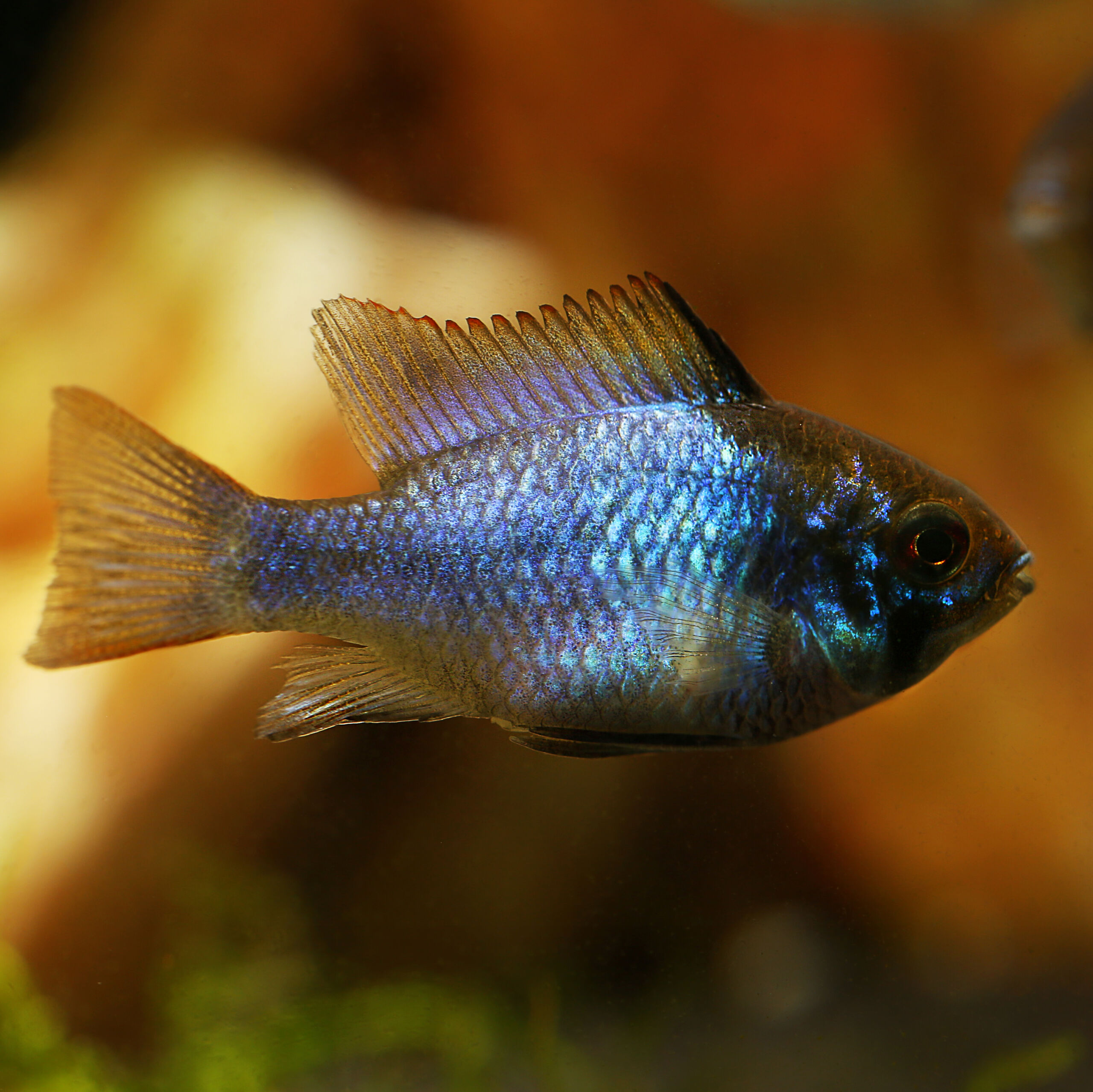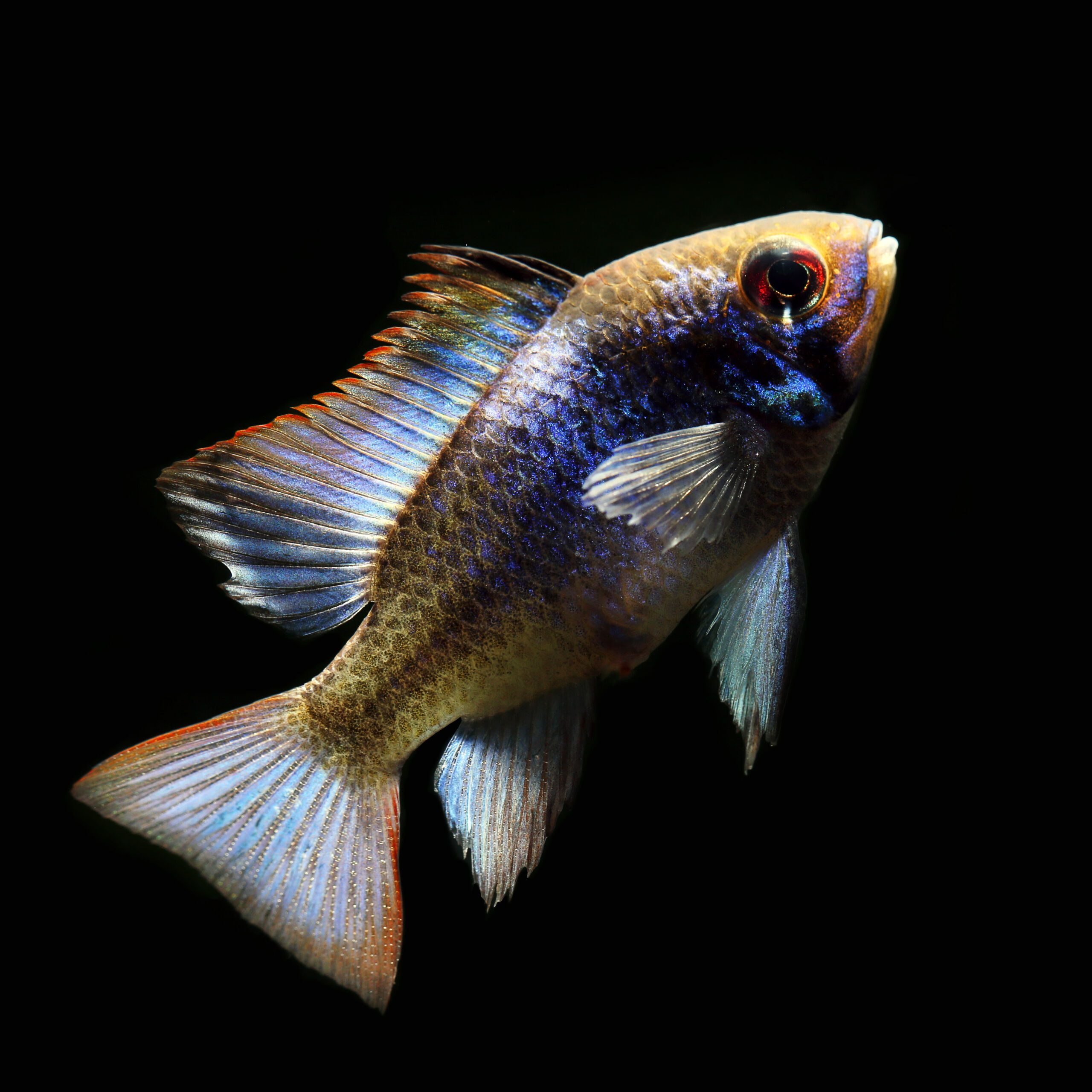Dark Blue Ram Cichlid
Mikrogeophagus ramirezi
The Dark Blue Ram Cichlid is an absolute eye-catcher with its metallic dark blue body color.
- pair-forming fish from South America
- beautiful coloring
- high blue content
Choose your variation:
 Delivery in a few working days
Delivery in a few working days
 Free shipping from €60 across Austria
Free shipping from €60 across Austria





Important data
Product description & details
The Ram Cichlid is a Cichlid that grows to about 5 cm in size and originally comes from South America. The Dark Blue is a breeding form of the classic Ram Cichlid in which the black markings are largely no longer present and the body is almost completely shimmering in a beautiful, metallic dark blue.
Care in the aquarium
The requirements of the Dark Blue are identical to those of the classic Ram Cichlid. It requires a tank with a capacity of at least 60 liters – especially in a community tank, it is better to have a capacity of 112 liters or more. Dense vegetation and other shelter options such as roots, rock structures and burrows provide an ideal habitat. Ram Cichlids are kept in pairs. There should only be one pair of this species, especially in smaller tanks, as they form territories which are also defended against conspecifics, especially during the breeding season. All in all, it is a very peaceful fish, which can be excellently socialized with South American tetras and catfish. This fish has higher demands on the water parameters and reacts sensitively to suboptimal conditions, which is why it is recommended for advanced aquarists. The aquarium water should be rather soft, above all very clean and free of nitrite and also contain very little nitrate. A weekly water change is therefore essential to keep the germ density low and to ensure the health of the Dark Blue Ram Cichlid.
Feeding
The Dark Blue Ram Cichlid is an omnivore and also accepts commercially available fish food without any problems. Of course, live and frozen food are particularly popular.
Sexual characteristics and breeding
The female Dark Blue Ram Cichlid can best be identified by their reddish coloration on the middle of the abdomen. In the males, the 2nd dorsal fin ray is longer than the other rays. Nowadays, however, this is often the case with females as well, which is why it is best not to identify the sexes solely on the basis of this characteristic. The males are also slightly larger than the females when fully grown. Propagating Mikrogeophagus ramirezi in the aquarium is not particularly difficult as long as its water quality requirements are met and the pH is around 5.0 – 6.0. Ram Cichlids lay their eggs openly on flat surfaces such as stones and defend them. The young animals hatch after a few days and after less than a week they are already swimming freely. From this point on, the offspring are led around in the tank by the parents, which is very interesting to observe. After the yolk sac has been consumed, the little ones can be fed small live or frozen food, such as newly hatched Artemia nauplii, copepods or cyclops.







